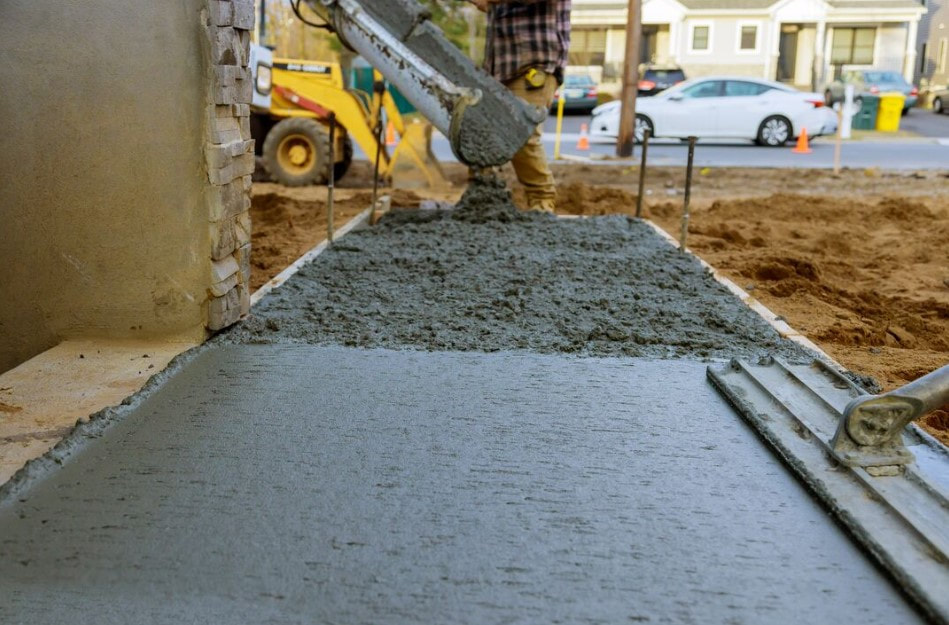BLOG CORNER |
Step 1: Preparing the Site
Before pouring the concrete, it's essential to prepare the site properly. This involves removing any obstacles like rocks, roots, or debris that may obstruct the construction of the sidewalk. The area must be excavated to a depth of at least four inches, and the soil must be compacted to ensure a firm base for the concrete. Step 2: Laying the Base The next step is to lay the base for the sidewalk. A layer of gravel is laid down and compacted to provide additional stability and support for the concrete. The thickness of the gravel layer depends on the soil type, and it's essential to consult a professional to determine the appropriate thickness. Step 3: Setting the Forms Once the base is prepared, the forms for the sidewalk are set up. Forms are typically made of wood or metal and serve as a barrier that contains the concrete in place. They are installed on either side of the sidewalk, and their height determines the thickness of the concrete slab. Step 4: Pouring the Concrete The concrete is mixed in a truck or a mixer and transported to the site. The concrete is then poured into the forms, and the finishers use shovels and rakes to spread the concrete evenly. The concrete must be poured quickly and efficiently to ensure that it does not dry out or harden before the finishers can complete their work. Step 5: Finishing the Surface Once the concrete is poured, the finishers work on the surface to create a smooth and even finish. They use tools like trowels, brooms, and stamps to create different textures and patterns on the surface of the concrete. The finishers work quickly to ensure that the concrete surface remains workable until the desired finish is achieved. Step 6: Curing the Concrete After the concrete is poured and finished, it needs time to cure properly. Curing is the process of allowing the concrete to harden and reach its full strength. It typically takes about a week for the concrete to cure fully. During this time, it's essential to protect the surface from extreme temperatures, rain, and other weather conditions that can affect the curing process. Step 7: Sealing the Surface Once the concrete is fully cured, it's time to seal the surface to protect it from damage and staining. A concrete sealer is applied to the surface to create a protective barrier that repels water, oil, and other substances that can cause damage to the concrete. Conclusion Pouring and finishing concrete sidewalks requires skill and experience to ensure a quality and long-lasting result. If you are planning to install a new sidewalk or repair an existing one, it's essential to consult a professional concrete contractor who can guide you through the process and provide expert advice. A well-designed and properly installed concrete sidewalk can enhance the curb appeal of your property and provide a safe and durable walking surface for years to come. Get in touch or call us today! |
Archives
July 2024
Categories |
|
Contact Us For A Referral: 719-299-0550
Monday 6:00 AM - 9:00 PM
Tuesday 6:00 AM - 9:00 PM Wednesday 6:00 AM - 9:00 PM Thursday 6:00 AM - 9:00 PM Friday 6:00 AM - 9:00 PM Saturday 6:00 AM - 9:00 PM |
Our Service Areas: |
Puebloconcretecontractors.com is a referral service to pair you with the top concrete contractors in Pueblo, CO.

 RSS Feed
RSS Feed